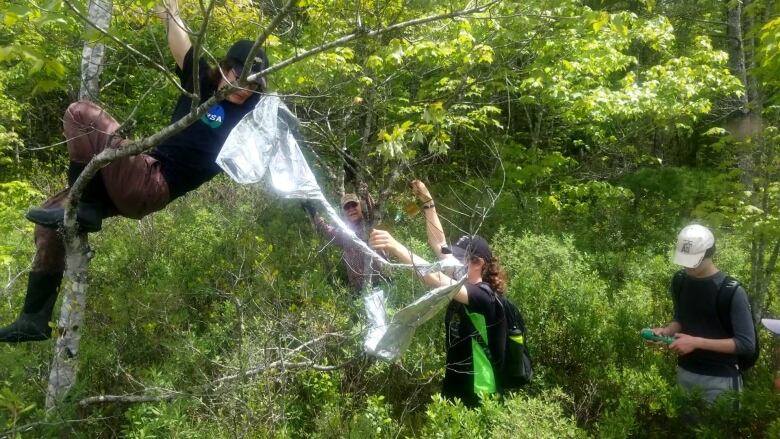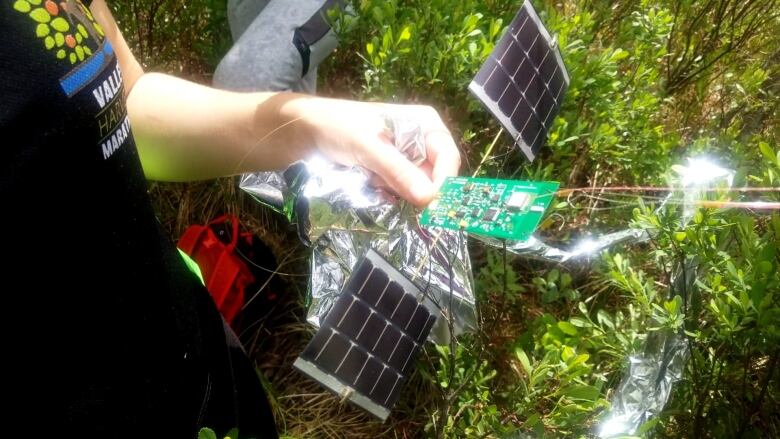California balloon races its way to the Nova Scotia woods
Retrieval 'great example of international co-operation through amateur radio'

A balloon that originally came from California was found in awooded area outside Liverpool, N.S., on Saturday.
Themid-altitude balloon was part of a four-balloon, cross-continentrace from the west coast to the eastern time zone. The silver Mylar balloon that was found in Nova Scotia was the winner.
The Annapolis Valley Amateur Radio Club and the Annapolis Royal Space Agency retrieved the balloonafter itsfour-day journey.
"It's been an interesting day," said Alphonse Penney, a member of the radio club."It was a good drive in on the roads and then slogging through the woods. Even though it was only 750 metres, it's thick bush and it took a while to get in there. But we recovered it quite easily. We spotted it from 95 metres away."
There was a position reporting system on board, so the Annapolis Valley Amateur Radio Club, with help from other amateur radio operators around the Liverpool area, wasable to narrow the search field.
Pico balloon
"It's a thing that amateur radio operators have put together, it uses GPSand it's connected to a radio transmitterthat will send a position," Penney said.
The balloon, known as a Pico balloon, is different from the high-altitude balloons used by the Annapolis Royal Space Agency.
Distance, not altitude, was the aim of the balloon recovered Saturday.

Penney became involved with the search after hearing from a colleague in New Brunswick.
Initial signals showed a vast search area, so Penney contacted some amateur radio operators in the area and they were able to get a more exact position for the balloon.
"They picked up a signal. It was weak, but they were able to get a solid position on it," Penney said.

Penney said being able to retrieve the balloon was "a great example of international co-operation through amateur radio."
The Annapolis Valley Space Agency helped find the balloon. The group does its own space balloon launches and gets help from the radio club.
"This one here just landed on the other side of a lake and it was just down low at a low bush in a swampy area where there wasn't a lot of trees," said Derick Smith, a member of the space agency. "We were able to grab it, just pick it right out of the bush. It was actually a really easy retrieval.'
Plans to relaunch
Smith said the balloon is still functioning, so he's hoping to relaunch it.
"Next year, when school goes back in, we'll try and relaunch this one and we'll launch a few more of our own using this as a prototype and see if we can get it to land over in Europe or further," Smith, a teacher atAnnapolis West Education Centre, said.
Smith said there are some mid-altitude balloons that have circumnavigated the globe twice before landing.
"We'll send it back up in the fall and see how far it gets," Smith said.
Amateur Radio on the International Space Station (ARISS) backed the race. It is an international non-profit organization focused on education in science, technology, engineering and math.












_(720p).jpg)


 OFFICIAL HD MUSIC VIDEO.jpg)
.jpg)



























































































